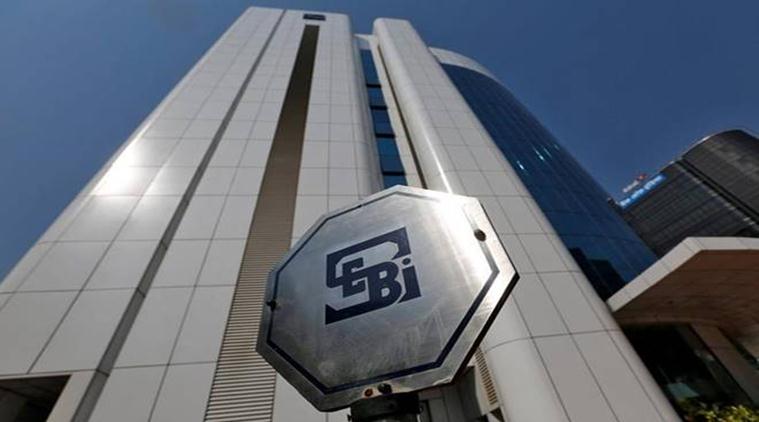
- Self-Study Guided Program o Notes o Tests o Videos o Action Plan

© 2019 The Indian Express Ltd.
All Rights Reserved
The writer is a Senior Research Fellow at Shardul Amarchand Mangaldas & Co
 Former Finance Minister Arun Jaitley had ushered in a critical, yet often overlooked, reform — the Depository Receipts Scheme, 2014. On paper, this scheme generously liberalised the overseas listing regime for Indian corporates. But, it was never fully operationalised. This was a major setback for Indian corporates. From 2013 to 2018, only one Indian company raised $185 million on the New York Stock Exchange.
Former Finance Minister Arun Jaitley had ushered in a critical, yet often overlooked, reform — the Depository Receipts Scheme, 2014. On paper, this scheme generously liberalised the overseas listing regime for Indian corporates. But, it was never fully operationalised. This was a major setback for Indian corporates. From 2013 to 2018, only one Indian company raised $185 million on the New York Stock Exchange.
Fortunately, this situation may soon change. Finance minister Nirmala Sitharaman recently unveiled a set of measures to boost economic growth. This includes the operationalisation of the scheme by the Securities and Exchange Board of India (SEBI). Indian companies use depository receipts (DRs) to access international capital markets. DR issuance involves two steps — Indian securities are deposited with a custodian in India; against such deposited securities, DRs are issued by a depository bank in a foreign jurisdiction. Consequently, DRs are foreign securities which are traded and settled off-shore. This arrangement has three major advantages for Indian corporates.
First, DRs help Indian companies overcome the home bias problem. Home bias refers to the tendency of foreign investors to disproportionately allocate their funds to their domestic jurisdiction. Consequently, very few Indian companies are able to attract foreign investment. DRs avoid this home bias since foreign investors invest in DRs just like any other security in their home jurisdiction.
Second, DRs unlock valuation potential of Indian companies in innovative sectors like technology and e-commerce. Valuation of a business depends on the market analysts’ exposure to comparable businesses. Since international capital markets are more likely to have comparable businesses in innovative sectors, the analysts in those markets are better equipped to unlock the valuation potential of these Indian companies. In the absence of a functional DR route, Indian businesses are forced to use an overseas holding structure to list abroad.
Third, DRs offer various commercial advantages to Indian companies. An Indian company issuing DRs submits itself to the corporate governance standards of that foreign jurisdiction. This “legal bonding” helps gain trust of local customers, government and earn brand recognition in that foreign market.
India’s tryst with DRs began with the first scheme in 1993. Liberalisation gave a major boost to export-oriented services sector companies. Given their high growth potential, they could easily raise equity capital. International financial centres offered sophisticated analysts who could unlock their valuation potential. Their marquee clients were also in developed countries like USA. All these factors shaped the 1993 scheme. From 1993 to 2013, over 330 Indian companies used DRs to access international capital markets.
In 2013, the Indian Finance Ministry set up the Sahoo Committee to review the 1993 scheme. The Committee recommended liberalising the 1993 scheme. Jaitley accepted the recommendation and announced a liberalised DR scheme in his maiden budget speech in July 2014.
This scheme recognised the principle of competitive neutrality. It allowed DRs to be issued on any Indian security in which a non-resident could invest under the Foreign Exchange Management Act, 1999 (FEMA). The scheme also allowed any Indian company, listed or unlisted, private or public, to sponsor DR programmes. Indian entrepreneurs were given full freedom to raise capital in India or abroad.
The scheme also addressed the risks of market abuse. It allowed DRs to be issued only in permissible jurisdictions which are members of Financial Action Task force (FATF) and International Organisation of Securities Commissions (IOSCO). Further, it clarified that market abuse through DRs having any impact in India would be market abuse under Indian laws.
The RBI promptly amended the FEMA regulations to operationalise the scheme. However, SEBI was concerned with beneficial ownership. Indian law requires every beneficial owner of equity shares holding 10 per cent or more of the ultimate beneficial interest in a company to file a declaration with that company. The challenge was to ensure compliance by foreign holders of DRs on underlying Indian equity shares.
This issue was finally laid to rest by SEBI’s Expert Committee in 2018. It observed that the threshold prescribed for beneficial ownership declaration under Indian law is similar to that followed in the permissible jurisdictions for DR issuance. It concluded that beneficial ownership requirements could be met by the information provided by DR investors in the manner prescribed under the laws of the permissible jurisdiction.
With this, the path to operationalising the scheme is now absolutely clear. Hopefully, SEBI will take immediate steps to fulfil one of the few incomplete legacies of Jaitley’s tenure.
The writer is a Senior Research Fellow at Shardul Amarchand Mangaldas & Co
Download the Indian Express apps for iPhone, iPad or Android
© 2019 The Indian Express Ltd. All Rights Reserved